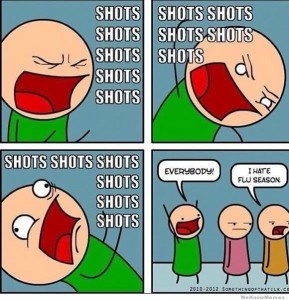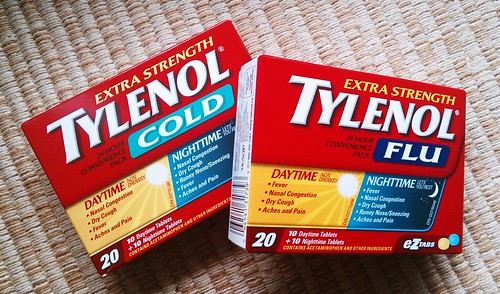Are you tired of getting vaccinated every flu season? Do you want to be protected but refuse to be poked? Fear no more, the universal flu shot is here (well not yet, but almost).
Every flu season millions flock to receive that seasons flu shot. Have you ever wondered why you can be vaccinated just once and be protected for life for diseases such as mumps and measles but not the flu?
This can be answered by the characteristics of the flu. There are 3 known types of flu viruses but only 2 types of flu viruses which cause the annual flu. The types that cause the flu are A and B. However, these have many subtypes which change every season because of the genetic changes undergone by the head region. So every season the World Health Organization is given predictions of the strain of flu that scientists believe is circulating that year. Using this information that seasons vaccine is chosen. However, the educated predictions made to create the flu shot fail to be completely effective as they can only protect up to 3-4 strains of that flu. Therefore, it is difficult to create a vaccine every year that is completely successful in protecting us against the annual flu. This is one of the main reasons why developing an all-in-one flu shot is of much interest.
There have been many attempts to try and create the all-in-one flu shot. The difficulty is creating one that can account for the different strains. A recent study, in Nature Science, has came up with an innovative solution to creating a universal flu shot which may solve the issue that the flu changes every year.
In their approach they focus on the proteins on the outside of the antibody. These proteins are comprised of a head and a stem. The head, in flu vaccines being hemagglutinin (HA), can mutate and it is the reason for the various faces of the flu. However, the stem doesn’t mutate as easily as the HA. The new vaccine uses this information and focuses on the stem instead of the head. If our bodies can recognize the stem and create antibodies according to the stem, it would be able to create antibodies to protect one against all strains of the flu; this would account for all the changes in the HA.
The following video gives a brief overview of how the vaccines work and how this universal flu vaccine would work.
Credit: Discovery News
This study has been proven successful in rats and chimps, however it must be researched and perfected before it can be used in humans. The difficulties of creating an all-in-one shot is the ability of the flu to change itself. Focusing on the stem instead of the head may be the way to success. Thankfully, this innovation is on a uphill and our future for the all-in-one flu shot is looking bright!
-Vanessa


